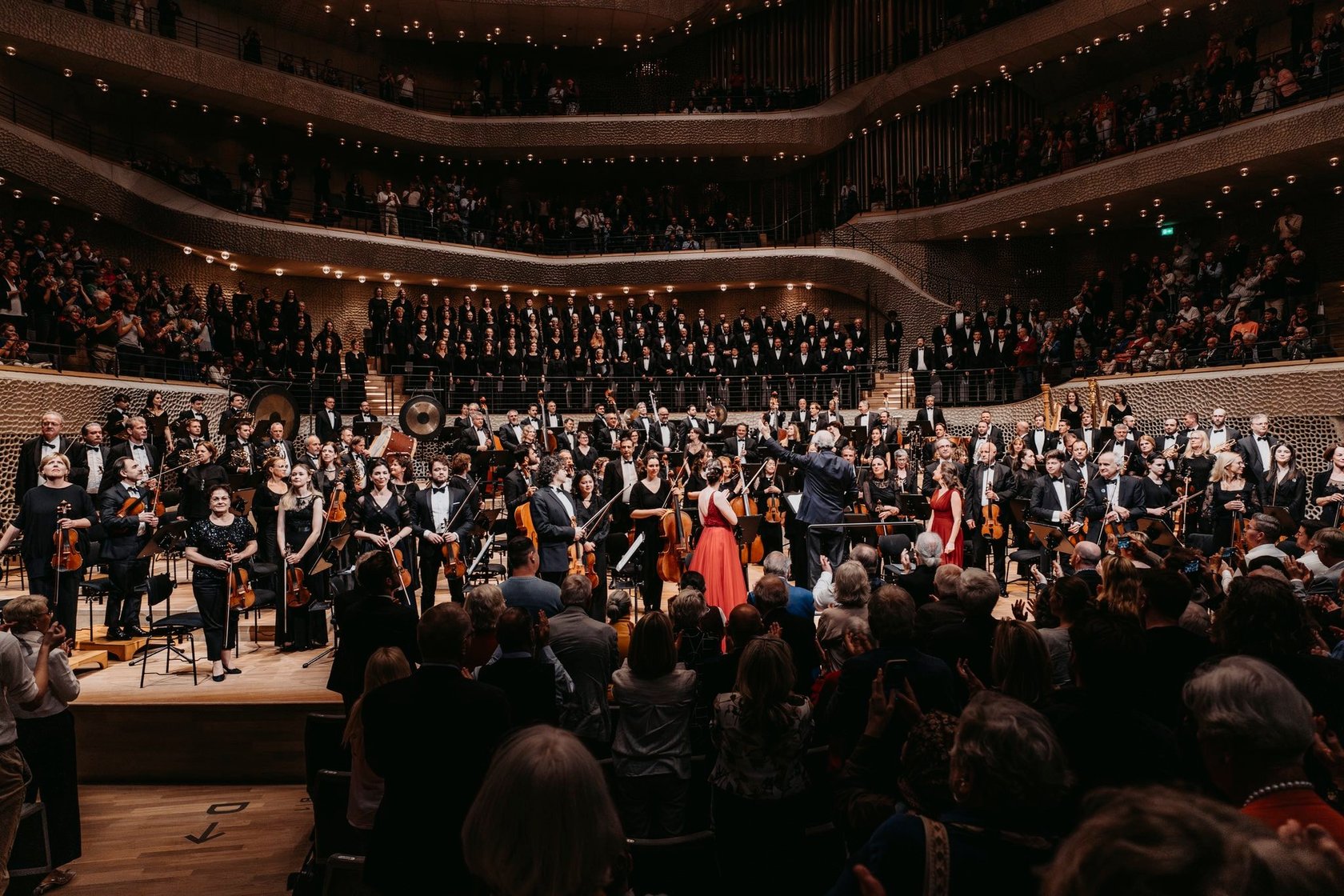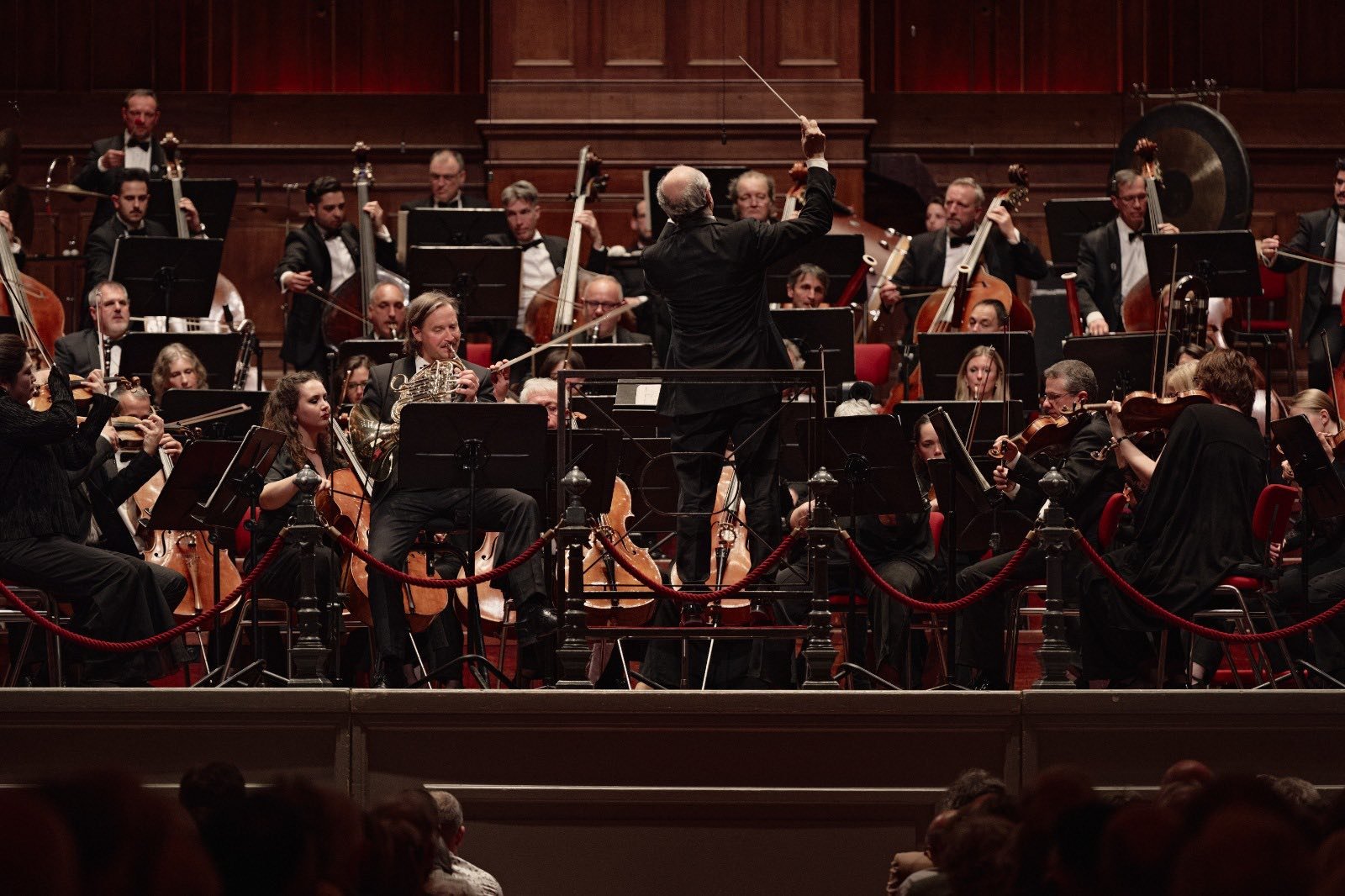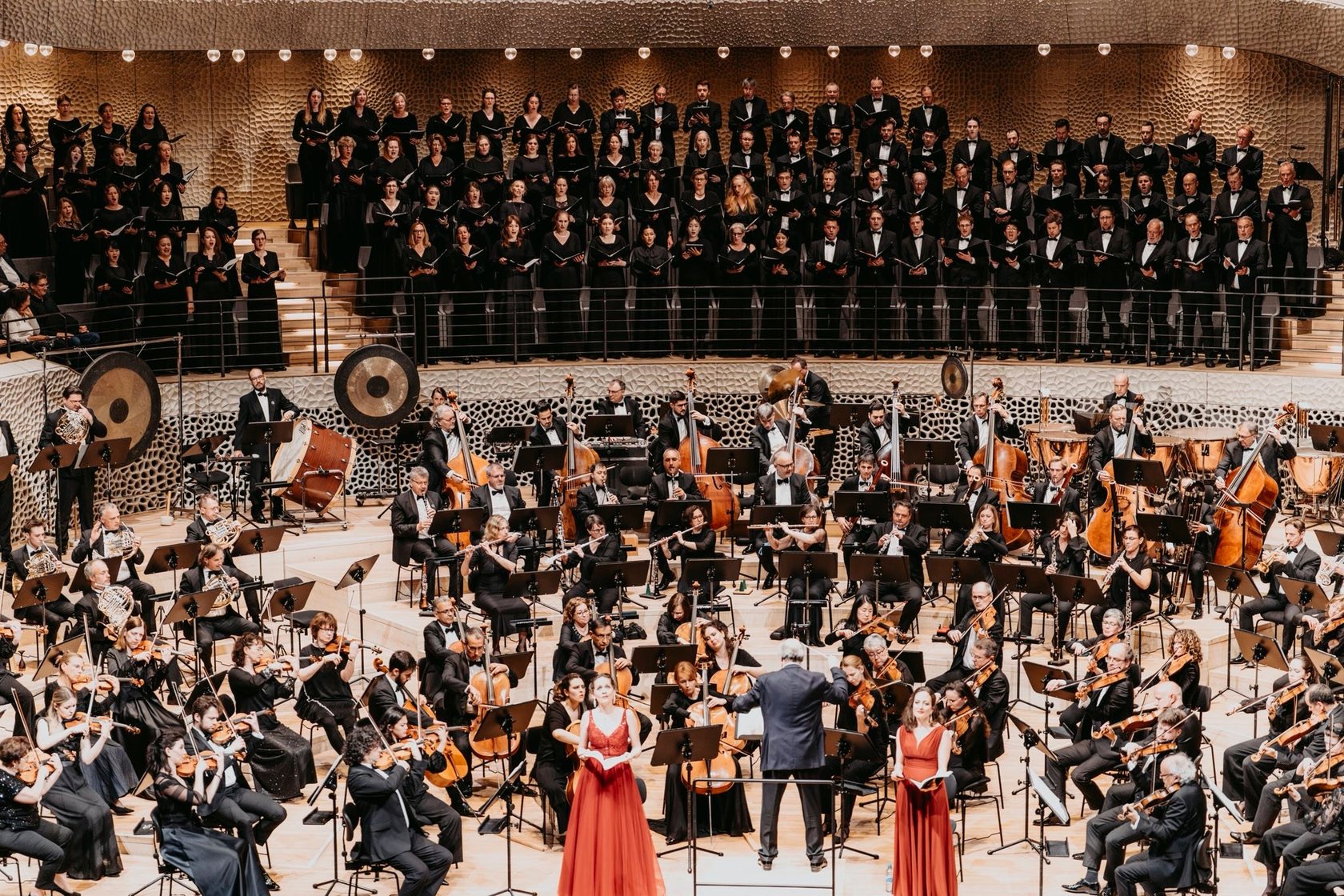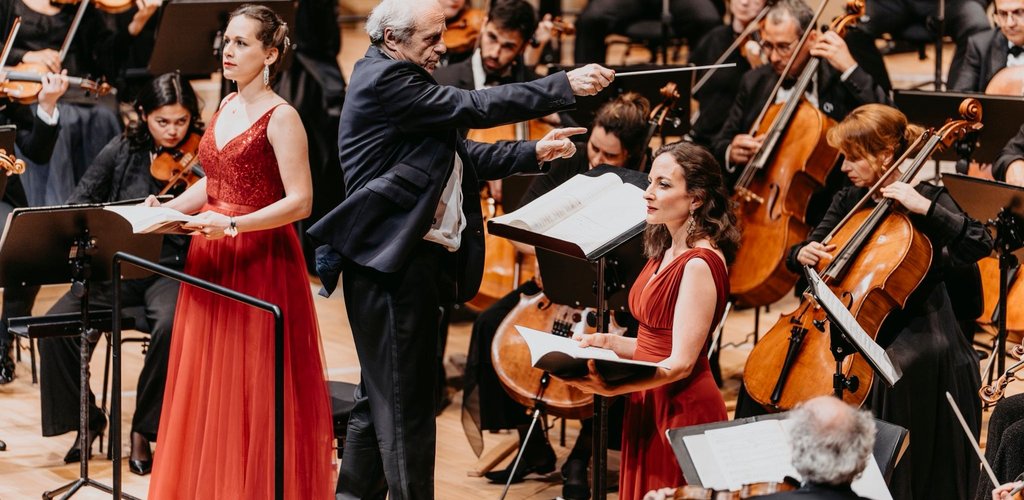In May 2025, Ivan Fischer and the Budapest Festival Orchestra once again proved why they are among the most authentic interpreters of Mahler’s music. The central stop of the tour was the prestigious Mahler festival in Amsterdam, where they had four concerts inside the legendary walls of the Concertgebouw, among leading orchestras like the Berlin Philharmonic, the Concertgebouw Orchestra and the Chicago Symphony Orchestra. If we add to all that the fact that the orchestra performed Mahler’s Second Symphony twice, his Fifth Symphony five times, as well as the Kindertotenlieder in May, it is no exaggeration to say that they delivered an outstanding performance both artistically and physically.

“He not only plays the notes, but also plays with them.”
Amsterdam became a Mecca of Mahler during the 11-day Mahler Festival, where Iván Fischer and the Budapest Festival Orchestra performed the composer’s monumental Symphony No. 2 “Resurrection” twice.
A critic of the NRC wrote: Fischer “not only plays the notes, but he also plays with them”, and his conducting “showed an extraordinary sensitivity as he played with silence and sound, irony and deep faith, sweeping power and Mahler’s tender humanity.” The review praised the conductor as a “sound magician” adding that “the concert drew the audience with a musical embrace” into the symphony’s world. The Netherlands Radio Choir and the two soloists, Anna Lucia Richter and Christiane Karg brought “moving human depth” to the spiritual final movement. The reviewer of Bachtrack described the concert on May 11 as earth-shattering: Fischer mastered the acoustics of the Concertgebouw, and the dynamic arches, the tension and the catharsis all had a stunning effect. Anna Lucia Richter and Christiane Karg performed the solo parts with great sensitivity, while the Netherlands Radio Choir conveyed Mahler’s otherworldly message with particularly poignant effect. The final movement resounded grandly – “Rise again, yes rise again” – while there was not a dry eye in the house.
In an account of the May 11 concert of the Amsterdam Mahler Festival, the critic of De Nieuwe Muze praised the “outstanding quality” of the performance of Mahler’s Symphony No. 2 by the Budapest Festival Orchestra and conductor Iván Fischer. He lauded the orchestra’s homogeneous and intense playing, highlighting the solos of the woodwind and brass players, the concertmaster, and the percussionists, which were often “magnificent”. The E-flat clarinetist performed their solo “with humor and a natural legato”, while the whole orchestra resounded “beautifully, homogeneously and intensely”. Afterwards, “purified” musicians and audiences met each other in the street, “fully convinced that heaven existed and we had all been saved”.

Mahler brought to life
The orchestra performed two different concert programs at the festival: in addition to the monumental Symphony No. 2, Symphony No. 5 and the Kindertotenlieder were also included in the repertoire. The de Volkskrant mentioned three names: Iván Fischer, Anna Lucia Richter and Zoltán Szőke. Richter sang the Kindertotenlieder “heartbreakingly beautifully” with some unforgettable moments especially in the last song. In Mahler’s Symphony No. 5 Fischer gave a “dark momentum” to the funeral march, while Szőke’s solo was “stable and tender”. The glowing D major chord following the “masterful buildup” of the finale created an effect “as if Mahler himself was standing in front of the orchestra”. “Richter’s heartbreakingly beautiful singing was enhanced by flawless intonation”, and her sensitive and intimate performance was on the verge of chamber music.

“Thrills guaranteed”
The tour continued in Switzerland, in the concert halls of Geneva, Luzern, Zurich and Bern. A stunning performance of Mahler’s Fifth Symphony opened the Swiss part of the tour in Geneva. According to Le Temps, in Fischer’s passionate interpretation, the Adagietto turned into an almost Schubertian melody woven with quiet sorrow. Drawing from Central Europe’s cultural melting pot, the orchestra conveyed Mahler’s world, where Balkan, Gypsy, Jewish, and Austrian folk music elements intertwine, with authenticity. Iván Fischer explained: “The funeral march in the first movement of the Fifth Symphony is not just a critique of militarism, but it also carries a sinister premonition of the Holocaust.” The concert faithfully reflected the deep cultural roots and artistic vision of the orchestra and its conductor.
In Brugge, Belgium, both The Song of the Earth and the Fifth Symphony were performed. The De Nieuwe Muze reported on a “lyrical and passionate interpretation” praising particularly the “tenderness and subtlety” of the Adagietto evoking “Mahler’s intoxication of love”. The review described the concert as “majestic”: in the intimate performance of the Kindertotenlieder, Anna Lucia Richter’s sensitive, nuanced singing and the orchestra’s delicate playing formed a “harmonious whole.”

The final stop of the tour was Hamburg, where the Resurrection Symphony was performed again, this time to audiences at the Elbphilharmonie. This is what the Hamburger Abendblatt wrote about the concert: “The Budapest Festival Orchestra brought Mahler’s world to life with wonderful colors and enchanting sound. The magic worked.”
The BFO’s Mahler tour in May can truly be regarded as a kind of musical pilgrimage, not only for the orchestra and the audience, but also considering the new renaissance of Mahler’s music. As Iván Fischer put it: “Really the cult of Mahler, where everybody started to love it, came after this cycle of Bernstein in Vienna but it was a spirit of the time. I think what created the breakthrough was that you didn’t feel that music had to comport to certain norms and so it was a little liberation of the ‘60s, the time of free love, Beatles.” (APNews)
